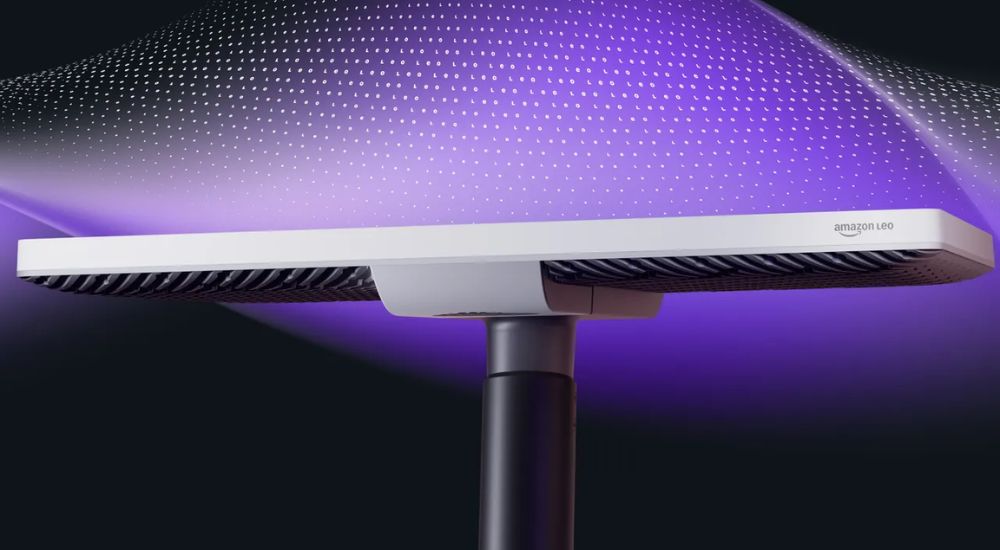Amazon has introduced the Leo Ultra terminal for its satellite broadband internet service. According to the company, it will come into deployment in 2025 and will be rolled out to broader customers in 2026.
It’s the first time that the company has brought something that can actually compete at a high level, with Starlink, for instance.
Amazon’s Leo Ultra terminal for satellite broadband
Amazon says that the Ultra terminal is its fastest offering and is to be installed permanently at fixed sites. It’s also the largest so far, 20 x 30 inches with a chassis depth of 1.9 inches. It supports up to 1 Gbps download and 400 Mbps upload speed.
The new terminal comes as Amazon launches more satellites into its constellations, taking the total to 150 LEO satellites under Project Kuiper.
Leo Ultra was one of three customer terminals shown as part of the new network push. Alongside it, Amazon previewed a mid-sized Leo Pro terminal designed for portable or vehicle-mounted use, and a compact 7-inch square Leo Nano unit rated for up to 100 Mbps. All three run on custom silicon developed by Amazon’s device teams and share the same core waveform and protocol stack. There’s a significant expansion plan ongoing as it seeks to reach global markets.
Amazon’s broadband network is a hybrid connectivity as it can be tied to AWS for cloud workloads. There are no pricing details yet on Amazon Leo Ultra, but enterprise customers are expected to be the first ones to get it for purchase.
Check out: List of airline companies that use Starlink in-flight internet
Amazon’s tapping into the satellite broadband market pits it against SpaceX’s Starlink offering. But in terms of speed, Amazon may be hitting the bullseye with gigabit capacity. Starlink’s average speed remains 100 Mbps, with some users getting as far as 300 Mbps. The satellite broadband market is getting more common each day; that’s all we can say right now, though.
